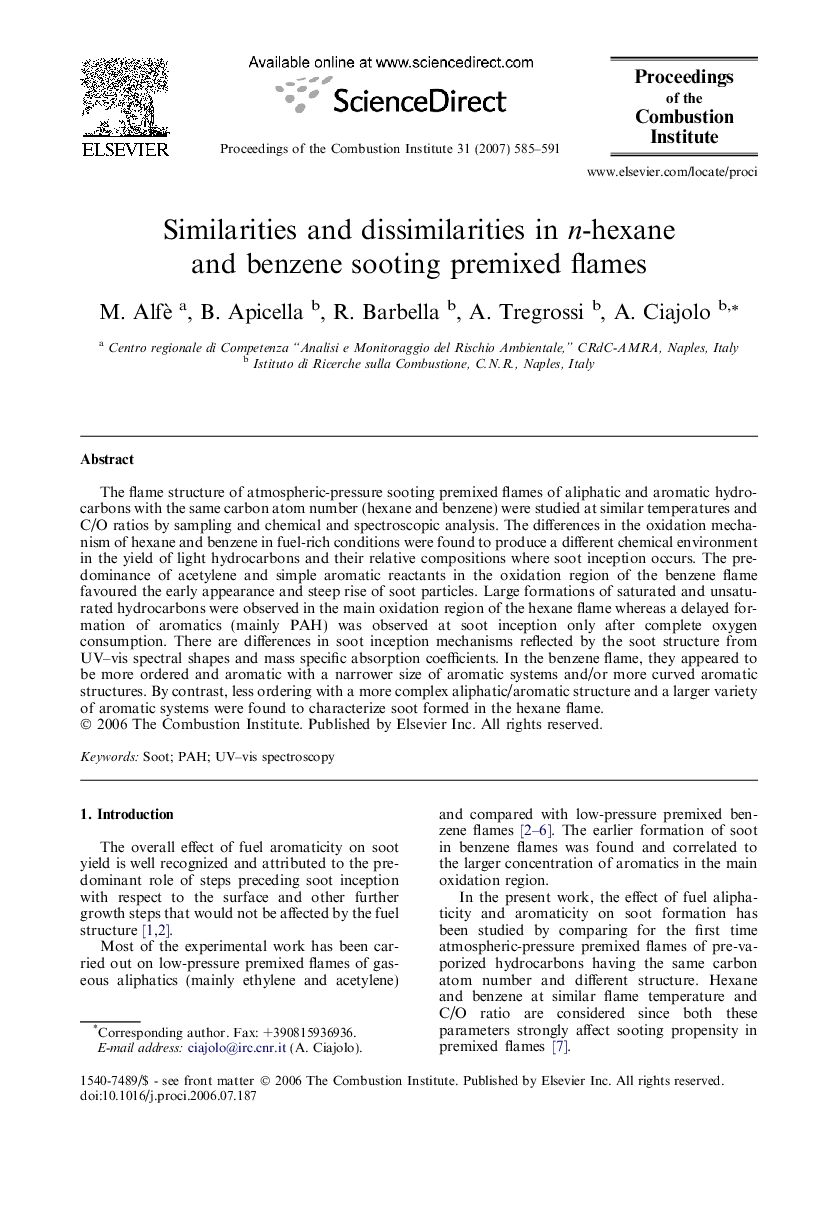| Article ID | Journal | Published Year | Pages | File Type |
|---|---|---|---|---|
| 240764 | Proceedings of the Combustion Institute | 2007 | 7 Pages |
The flame structure of atmospheric-pressure sooting premixed flames of aliphatic and aromatic hydrocarbons with the same carbon atom number (hexane and benzene) were studied at similar temperatures and C/O ratios by sampling and chemical and spectroscopic analysis. The differences in the oxidation mechanism of hexane and benzene in fuel-rich conditions were found to produce a different chemical environment in the yield of light hydrocarbons and their relative compositions where soot inception occurs. The predominance of acetylene and simple aromatic reactants in the oxidation region of the benzene flame favoured the early appearance and steep rise of soot particles. Large formations of saturated and unsaturated hydrocarbons were observed in the main oxidation region of the hexane flame whereas a delayed formation of aromatics (mainly PAH) was observed at soot inception only after complete oxygen consumption. There are differences in soot inception mechanisms reflected by the soot structure from UV–vis spectral shapes and mass specific absorption coefficients. In the benzene flame, they appeared to be more ordered and aromatic with a narrower size of aromatic systems and/or more curved aromatic structures. By contrast, less ordering with a more complex aliphatic/aromatic structure and a larger variety of aromatic systems were found to characterize soot formed in the hexane flame.
